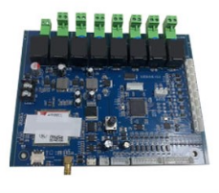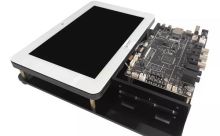To mimic the multifunctional features of human skin, the electronic skin integrates multiple sensors capable of simultaneously detecting factors such as temperature, humidity and pressure. In general, several combination effects of materials (such as thermoelectric, piezoresistive, capacitive) to generate different signals is the most straightforward way to design multifunctional wearable devices. However, this simple overlay assembly may increase the overall thickness and lead to higher manufacturing costs. Thus, a single wearable device that can detect more than one stimulus is important to simplify processing paths and explore more miniaturized and integrated intelligent futures. Although advanced data processing techniques such as machine learning can successfully analyze and separate overlapping signals, this approach relies heavily on the accuracy of flexible sensors, increasing the difficulty of the overall system. Moreover, the emergence of multi-reactive flexible devices essentially determines the great application potential of HMI, which heralds a revolutionary era in the pursuit of more realistic and colorful modes of interaction. In contrast to the integration of temperature or humidity sensors, a single device capable of detecting pressure and strain can simplify the communication channel between human and machine, thus improving the convenience and quality of life. However, most output responses under pressure/strain follow the same or similar mechanism, which leads to overlapping electrical outputs and even serious crosstalk. Therefore, there is an urgent need to develop a stand-alone multifunctional sensor capable of providing non-overlapping output signals about pressure and strain stimuli in a simple and effective manner.
At the same time, water resistance, wearable comfort and good air permeability are also key considerations in the practical application of e-skin. Air permeability is essential to adjust the heat and humidity balance and gas exchange between the human body and the external environment. However, most reported e-skins are produced with polymer membranes that are airtight or slightly toxic, and long-term wear can cause skin redness, itching, and irritation. In addition, the accumulation of sweat at the skin/sensor interface cannot be avoided in airtight devices, which can lead to device failure and eventually detangle the e-skin from the human body. Therefore, there is still a great need and interest to develop a stand-alone breathable and waterproof sensor that can provide non-overlapping signal readings when exposed to pressure or strain stimuli. With this in mind, researchers at the University of Macau have developed a breathable and waterproof electronic skin (E-skin) that can sense non-overlapping signals of pressure/strain, according to Memes Consulting. The synergistic effect of magnetic attraction and nanoscale aggregation makes the e-skin have gas-permeable micropores and superhydrophobic 3D micropores. Upon application of pressure, the bending of the conductive micropores brings them into full contact to reduce the resistance, whereas stretching causes an increase in resistance due to the separation of the conductive material.










